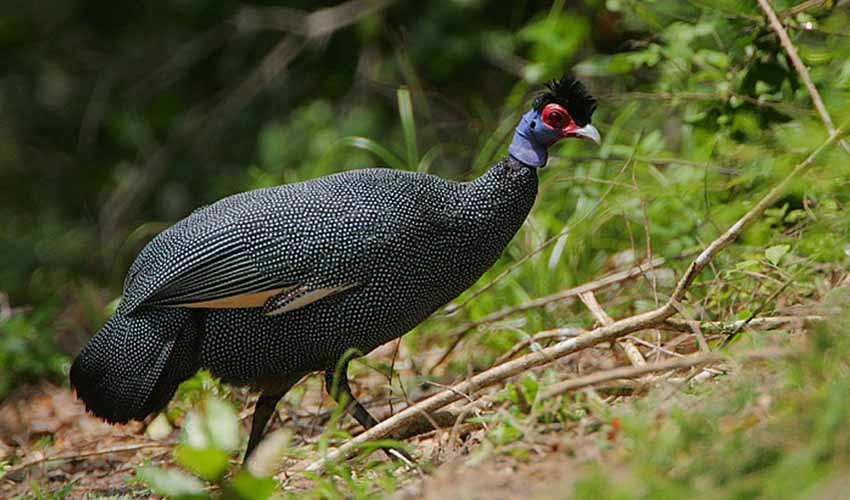A striking bird species found primarily in the forests and woodlands of East Africa, including countries like Kenya and Tanzania. It stands out due to its unique combination of appearance, behavior, and habitat preference. Unlike the more widespread helmeted guineafowl, the Eastern crested guineafowl prefers dense, shaded environments where it can move through the underbrush while remaining partially concealed.
One of the most distinctive features of this bird is its thick, curly black crest of feathers on the top of its head. This crest and bare blue and red skin on the face and neck make it easily recognizable. Its body is covered in dark plumage dotted with fine white spots, creating a speckled appearance that provides effective camouflage among forest shadows. The combination of bright facial skin and elegant feather patterning gives it a dramatic and unmistakable look in the field. It has a short, stout bill and strong legs, which are well-suited for walking and scratching through leaf litter in search of food.
Eastern crested guineafowl are omnivorous ground-foragers, feeding on a wide range of items such as insects, seeds, fruits, and small invertebrates. They usually forage in small groups, often composed of family members, and use vocalizations to stay in contact while moving through dense vegetation. They are known for their loud, rattling calls, which serve both as communication within the group and as alarm calls when predators are nearby. Although they can fly, they prefer to run from danger, only taking flight as a last resort. At night, they roost in trees to avoid ground predators.
Distribution
 Kenya
Kenya Somalia
Somalia Tanzania
TanzaniaAnything we've missed?
Help us improve this page by suggesting edits. Glory never dies!
Suggest an editGet to know me
Terrestrial / Aquatic
Altricial / Precocial
Polygamous / Monogamous
Dimorphic (size) / Monomorphic
Active: Diurnal / Nocturnal
Social behavior: Solitary / Pack / Herd
Diet: Carnivore / Herbivore / Omnivore / Piscivorous / Insectivore
Migratory: Yes / No
Domesticated: Yes / No
Dangerous: Yes / No




